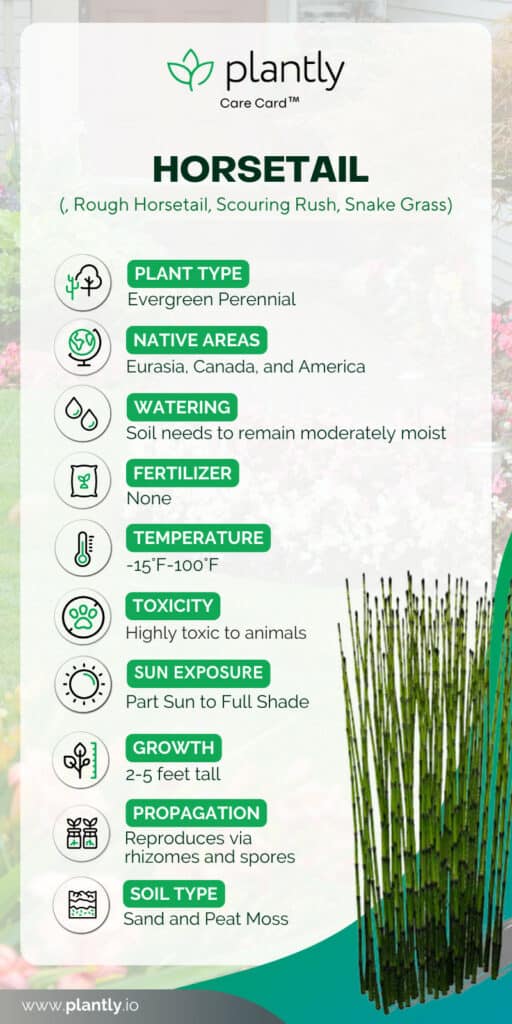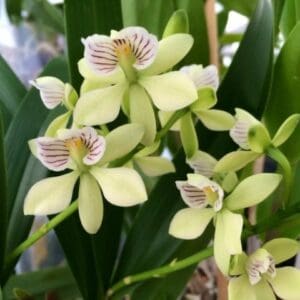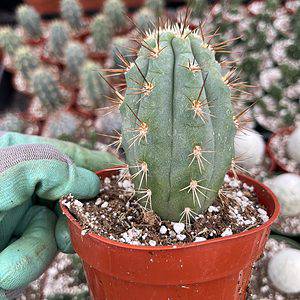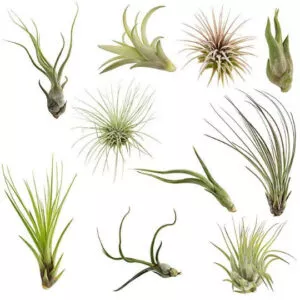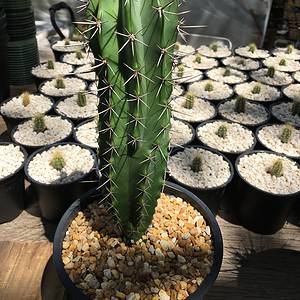No products in the cart.
Table of Contents
Welcome to our comprehensive guide for growing and caring for horsetails! We provide tips for propagating, planting, watering, and maintaining these unique perennials. Learn how to identify common diseases and pests. Discover the best practices for caring for horsetails in your garden for optimal health and growth.
Let’s dive in and explore the wonderful world of horsetail gardening!
Our quick reference table outlines the plant’s native country, type, ideal light, temperature, soil, water, propagation, and fertilizer for robust horsetail growth.
Horsetail Care and Growing Guide
Light:
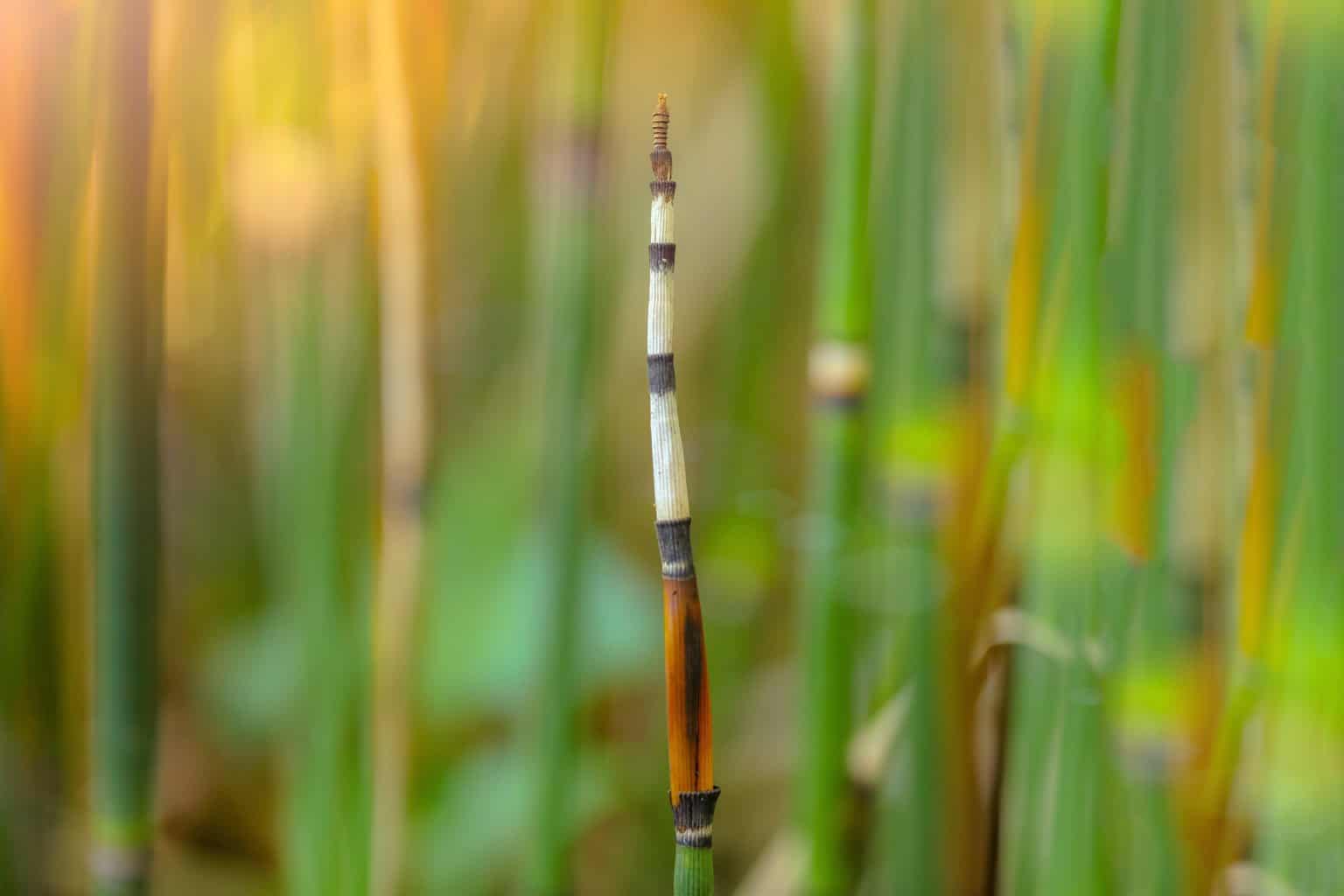
Part-sun to full shade (recommended) Can grow in full sun.
Drainage: needs to be able to have water run through it well (aquatic setup is perfect as long as the water is healthy)
Soil:
The first thing is first… NO FERTILIZER OR ADDITIVES. Horsetail does not like anything besides healthy water, natural sand, dirt, clay, and peat moss. No root compound as well because it will mess up the rhizome process.
It thrives in our sand and peat moss mixture, but we’ve also found it thriving in clay/dirt and rocks. Honestly, as long as it’s natural, it will do what it needs to do, but yes, our recommendation is the sand/peat moss mix.
-
$49.97Sold By: Carlo's Plant Farm
In stock
6 Parson Juniper | Carlo`s Plant Farm
Rated 5.00 out of 5 based on 22 customer ratings00Sold By: Carlo's Plant Farm -
$60.00Sold By: Via Citrus
$75.00In stock
Calamondin Citrus – Calamansi Hardy Citrus – Indoor & Out
Only 124 available and it’s in 15 people’s basketRated 4.92 out of 5 based on 237 customer ratings148Sold By: Via Citrus -
Free Shipping$39.99Sold By: Aloha Hawaii Orchids
$44.99In stock
Orchid Encyclia Radiata Fragrant Plant Comes in 4″ Pot From Hawaii
Rated 4.65 out of 5 based on 268 customer ratings02Sold By: Aloha Hawaii Orchids -
$12.99Sold By: Cacti and Exotica
In stock
Blue Cereus Cactus—Browningia Hertingiana,
Rated 4.98 out of 5 based on 59 customer ratings00Sold By: Cacti and Exotica
Water:
In terms of moisture level in the soil, it needs to be kept moderately moist for the first month after it’s transplanted. It can even grow submerged in water up to 4 inches from the base! (aquatic setups/indoor setups) Believe it or not, at the same time, it is drought tolerant after it has been established.
Each reed chambers water in each section and will use it up while the roots aren’t getting water. Pretty cool, right?
Reproduction:
Rhizome-type roots will feed on the soil’s minerals and water, creating new tubes through the ground. Off those tubes will give off new shoots and will keep repeating the process. Horsetail also spores at the top and dusts off into the soil.
Spores also reproduce new tubes in the soil and start the reproduction cycle again. Even if you accidentally kill the shoots, as long as the roots are taken care of and the rhizomes keep feeding, eventually, you will have new shoots come through. Starting to get cooler, huh? 😊 (#Amazing Plant)
Temperature and Humidity:

Horsetail prefers temperatures all the way up to 100 degrees and can handle all the way down to –15 degrees Fahrenheit. It needs little to moderate humidity.
Transplanting & Growing:
So, all of this is based on findings and studying the plant year-round. We will give you our professional ‘personal’ opinion as far as transplanting goes. We have tested growing horsetail with many different variables.
We have tried in water with no roots, in water with roots, soil, sand, and a soil-sand mixture, clay, black dirt, gold dirt, and everything in between. The verdict is… Horsetail will grow in almost every environment as long as it has some indirect sun in its day, water, and love.
We have intentionally killed this plant just to see if it would bounce back; low and behold… it did! The plant was white, crispy, and dry from top to bottom of the reeds. We trimmed it down, watered the poor thing, and it had new green shoots(reeds) within a week…
No longer just cool at this point, everybody. Horsetail is the hardiest and most remarkable plant we have ever come across.
Step 1: Receiving your Horsetail & Regenerating the Roots in Water
You have received your horsetail;
it’s in a moist blue towel with a plastic baggie, a band around the plastic, and two or more bands around the reeds. Remove the band around the baggie carefully and unwrap the blue towel. Leave the bands ON the reeds until further notice.
If you have some yellowing at the tips, refer to step 3 of the tutorial!
Place your horsetail in a clean and sanitized container of any kind that can acquire all of the horsetails. (15-25 reeds glass jar/ 50+ reeds plastic tub, etc.) Fill with water with a PH equal to or higher than 6.5 (well water, spring water, alkaline water) to half an inch over the top of the roots.
Remove the top band on the reeds, and now the waiting begins… but luckily not long at all 😉. Every couple of days, gently pour the water out and fill it again. Repeat the process for up to 2 weeks, or until you see all the new roots and baby shoots in your container!
If you desire to make it an indoor aquatic plant, add rocks or shells around the roots to the base, and add water half an inch past the base.
Repeat the same water process for the first two weeks and then quickly add water as it gets low, occasionally replacing the water, and guess what? Step 2 is your last step for an indoor aquatic setup!
Step 2: Getting Horsetail into the Soil
After fully completing step 1, and you feel the roots are healthy and regenerated enough to be ready to be put into the soil, you’re here!
Once you have your sand and peat moss from any store of choosing (especially ours), take the pot or container you select for your horsetail to fill up (more room, more fill) and fill it with 2/3 sand and 1/3 peat moss. Mix the two thoroughly and make it airy again by almost gently tossing it up and down.
Make sure to give roots enough space at the bottom and not put the roots as far down as you can go.
2/3 Sand & 1/3 Peat-Moss
Mix Thoroughly
Make it airy by fluffing the soil with your hands
Next, take your horsetail, gently set it in the hole you made, and lightly fill the soil mixture around and in it until you bury the roots and about an inch of the reeds. Lightly pack the top of the soil, remove your last band, and your horsetail is successfully potted!
Gently add the soil mix
Keep adding till the soil covers the reeds up to an inch
Keep soil moist for the first month.
Once the roots have established themselves, water when needed.
Step 3: Horsetail Grooming
By now, you’ve probably had a few reeds that are turning yellow at the top and are starting to go down the reed, ABSOLUTELY normal and perfectly fine! Grooming is part of the fun and can actually help promote the plant’s functionality.
In the beginning, you might get a lot, but that’s the plant telling you something; it’s regenerating and putting life to the roots!
Get any pair of clean scissors and cut the yellow out once it reaches the bottom of that chamber. The yellowing will usually only go down one chamber at a time and cut just above the next chamber right above the black ring. Now she’s beautiful as always and growing at the same time.
If you get some new shoots that want to start getting wavy or wander, lightly tie it up with floral wire or soft string back into the main stems, pack the soil tighter around it or add some if needed, and leave it alone for however long it takes. Repeat sometimes to wrap more in or to check.
Now that you have finished all your steps, your horsetail is growing; all it needs now is some sun, water, and love. 😊
Final Thought
Thank you so much for your order, and we wish you the best with your horsetail. If you need any further assistance, have questions, or need help with anything, you can always reach out to us where you ordered, by email, or by phone.
We try not to work weekends, but if our customers need help, we try to respond because our customers are now our plant friends. We want you to enjoy and have successful Horsetail and love this plant as much as we do.
As always, to our customers and new friends, your friendly neighborhood plant dealers,
– GlassHouseMichigan LLC
Frequently Asked Questions
Keep the soil moist all the time and expose it to full sun to partial shade. This plant loves watering but not too much since its stems have a chamber that holds water.
By nature, they are all outdoor plants. However, you can also grow them indoors as long as it receives the necessary light, humidity and correct potting mix. So yes, they can be considered indoor plants.
Yes, the horsetail plant is invasive species. If grown outdoors, they can mushroom your garden if not pruned occasionally. If planted indoors and grown in a pot, it’s easier to control them.
You can get horsetail plants at your local nurseries, online, here at Plantly or even at GlassHouseMichigan LLC.
Whether you want to buy, sell, or simply reach out to other plant enthusiasts, Plantly is the right place to be!
-
Free Shipping$156.04Sold By: BONSAI WORLD LLC
Only 1 left in stock
Ficus Kaneshiro Bonsai Tree (ficus microcarpa ‘kaneshiro’)
Only 1 available and it’s in 1 people’s basketSold By: BONSAI WORLD LLC -
$45.00Sold By: Beauties & Beasts
$50.00In stock
Ceramic Planters- Rae Dunn by Magenta Stem Print- Set of 2
Rated 4.83 out of 5 based on 24 customer ratings00Sold By: Beauties & Beasts -
Free Shipping$18.95Sold By: CTS Air Plants
In stock
Air Plants Tillandsia Collection of 10 Easy Houseplants
Only 100 available and it’s in 2 people’s basketSold By: CTS Air Plants -
